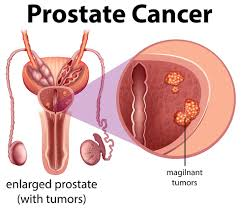A nurse is assessing a client who has Paget's disease of the bone. Which of the following findings should the nurse expect? (Select all that apply.)
Cold extremities
Skeletal pain
Visual loss
Cranial enlargement
Abnormal gait
Correct Answer : B,C,D,E
Choice A reason:
Cold extremities are not a typical symptom associated with Paget's disease of the bone. This condition usually does not affect the temperature of the limbs directly.
Choice B reason:
Skeletal pain is a common symptom in Paget's disease due to the abnormal bone remodeling process. The affected bones may become painful, especially in the pelvis, spine, skull, and long bones.
Choice C reason:
Visual loss can occur if Paget's disease affects the skull, leading to increased pressure on the nerves associated with vision. This pressure can result in visual impairment or loss.
Choice D reason:
Cranial enlargement is a possible finding in Paget's disease when the skull is involved. The abnormal bone growth can cause the skull to increase in size.
Choice E reason:
An abnormal gait may develop if Paget's disease affects the legs, causing the bones to bow and leading to difficulty walking.
Nursing Test Bank
Naxlex Comprehensive Predictor Exams
Related Questions
Correct Answer is B
Explanation
Choice A reason:
Testicular torsion is a condition where the spermatic cord becomes twisted, cutting off the blood supply to the testicle. It is not a typical complication following a prostatectomy. Testicular torsion is generally an acute condition that affects younger males and is unrelated to prostate surgery.
Choice B reason:
Erectile dysfunction (ED) is a common complication after prostatectomy. The surgery can damage the nerves and blood vessels that control erections, leading to ED. While nerve-sparing techniques aim to reduce this risk, some degree of erectile dysfunction is still possible after the procedure.
Choice C reason:
Cystitis, which is inflammation of the bladder, can occur after a prostatectomy due to the use of a catheter or as a result of the surgery itself. However, it is not as common or as significant a long-term complication as erectile dysfunction.
Choice D reason:
Paralytic ileus, a temporary cessation of bowel movements, can occur after any abdominal surgery due to the manipulation of the intestines or as a side effect of anesthesia. While it can be a complication of prostatectomy, it is typically resolved within a few days to weeks after surgery.

Correct Answer is C
Explanation
Choice A reason:
Adjusting the rate of the bladder irrigant may be necessary if there is an issue with the flow or the amount of fluid, but it is not the first action to take. The nurse must first ensure that there is no mechanical obstruction causing the lack of drainage.
Choice B reason:
Irrigating the catheter could be the next step if checking the tubing does not resolve the issue. However, it is not the first action to take because if there is a kink in the tubing, irrigation will not be effective and could potentially cause harm.
Choice C reason:
The first action the nurse should take is to check the tubing for kinks because this is a common and easily correctable cause of obstruction in catheter drainage. If the tubing is kinked, straightening it may allow urine to drain properly.
Choice D reason:
Notifying the provider is important if the other interventions do not resolve the issue. However, it is not the first action to take. The nurse should first perform basic troubleshooting steps to identify and correct any simple mechanical issues with the catheter system.
Whether you are a student looking to ace your exams or a practicing nurse seeking to enhance your expertise , our nursing education contents will empower you with the confidence and competence to make a difference in the lives of patients and become a respected leader in the healthcare field.
Visit Naxlex, invest in your future and unlock endless possibilities with our unparalleled nursing education contents today
Report Wrong Answer on the Current Question
Do you disagree with the answer? If yes, what is your expected answer? Explain.
Kindly be descriptive with the issue you are facing.
